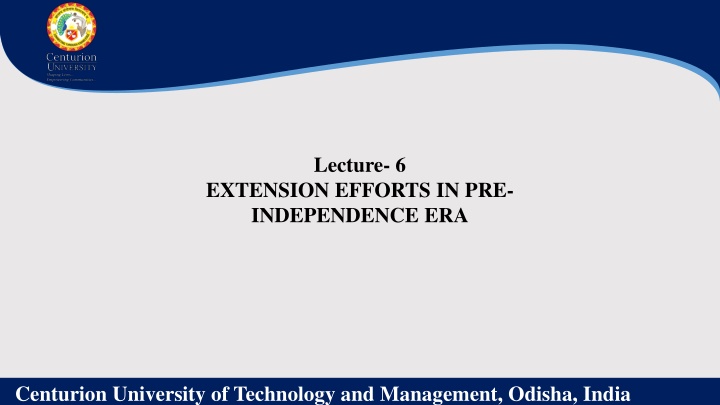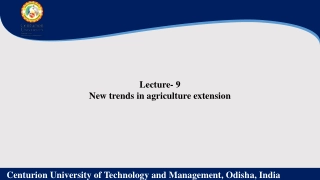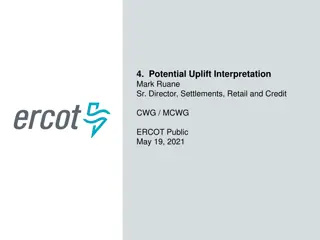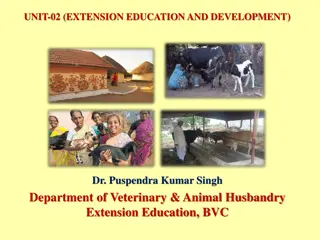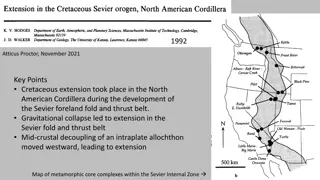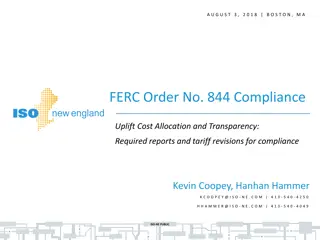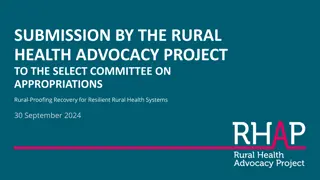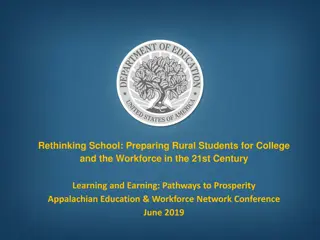Extension Efforts in Pre-Independence India: Rural Uplift Projects
In the pre-independence era of India, various extension efforts were undertaken to uplift rural communities and address pressing issues. Projects like Shri Niketan, Gurgaon Experiment, Marthandam Project, and Firka Development Scheme focused on holistic development, healthcare, education, and economic empowerment of villagers. These initiatives were aimed at improving agricultural practices, eradicating diseases, promoting cottage industries, and fostering community welfare. Despite some shortcomings, these projects laid the foundation for rural upliftment and self-reliance.
Download Presentation

Please find below an Image/Link to download the presentation.
The content on the website is provided AS IS for your information and personal use only. It may not be sold, licensed, or shared on other websites without obtaining consent from the author.If you encounter any issues during the download, it is possible that the publisher has removed the file from their server.
You are allowed to download the files provided on this website for personal or commercial use, subject to the condition that they are used lawfully. All files are the property of their respective owners.
The content on the website is provided AS IS for your information and personal use only. It may not be sold, licensed, or shared on other websites without obtaining consent from the author.
E N D
Presentation Transcript
Lecture- 6 EXTENSION EFFORTS IN PRE- INDEPENDENCE ERA Centurion University of Technology and Management, Odisha, India
SHRI NIKETAN PROJECT Founded by Ravindra Nath Tagore(1921) in collaboration with Elmhirst. Aim of the project: all round development of rural people . win the friendship of villager. make honest effort to solve the most pressing problems. Activities: Survey of selected Villages. Demonstration of improved practices Arranging campaigns for the eradication of Malaria, T.B., and other infectious diseases. Development of cottage industries. Weaver s cooperatives organized. Night schools for male and female. Establishment of social welfare centre in each village. Establishment of cooperative societies. Establishment of community centres. Centurion University of Technology and Management, Odisha, India
GURGAON EXPERIMENT Rural uplift movement on a mass scale was started by Mr. F.I. Brayne in 1920. Government of India granted Rs. One crore for the work which acted as a stimulus. Objectives: To increase agricultural production. To stop wastage of money on social and religious functions. To improve healthy standard of the people. To organize welfare programmes. Activities Appointment of village guides. Propaganda through films, folk songs, dramas Rural Economics and domestic Economics Schools. Short Comings A one man show Village guides were un-experienced and untrained. No comprehensive planning No continuity in the work Centurion University of Technology and Management, Odisha, India
MARTHANDAM PROJECT (1921) Started in 1921 by Dr. Spencer Hatch, an American Agricultural expert. In Trivendrum at some places, people used to cultivate only paddy and coconut That some developmental work was thought for spreading Christian faith. Dr. Hatch made agreement with Y.M.C.A. and Christian Church Association. It was having a 3 field programme - development of spirit, mind and body Later fivefold programme-development of the physic, spirit, mind, economic and social aspects of life. Centurion University of Technology and Management, Odisha, India
Firka Development Scheme 1946 Shri. V. T. Krishnamachari Sponsored by the provincial government with the aim of attainment of Gandhian ideal of gram swaraj by brining about not only educational, economic, sanitary and other improvements in the village, but also making the people self confident Selection of Firkas-based on general backwardness of the area and where there is possibility of initiating cottage industries. Consisted of two types of plans Short term plans (development of infrastructure, communications etc) and Long term plans (knowledge inputs, attainment of Gandhian ideal etc). Centurion University of Technology and Management, Odisha, India
Gandhian Constructive Programme Principles of Gandhian Philosophy Decentralized production Production by mass instead of mass production Equitable distribution of resources Contribute in the production process and get share as per your ability Self sufficiency of Indian villages Less dependency on external resources and conservation and development of resources Objectives Service to the underprivileged Achieving self dependency Providing education to people Organization of training centers for cottage industries Emphasis on women education. Centurion University of Technology and Management, Odisha, India
Gandhian movement of development was for the people, by the people and of the people Institutions established by Gandhiji- All India spinners association-All India village industries association o Gou Seva Sangha o Khadi Vidyalaya o Sevagram o KhadiAshram o Tiruchungodi o Gandhi Niketan-Kallupatti o Gandhigram o Dindigul o Gandhi SevaSadan o Porur o KasturbaAshram o Trichu Centurion University of Technology and Management, Odisha, India
Conclusion Development can not be visualized in isolation In Indian context development invariably and inevitably includes agriculture Centurion University of Technology and Management, Odisha, India
